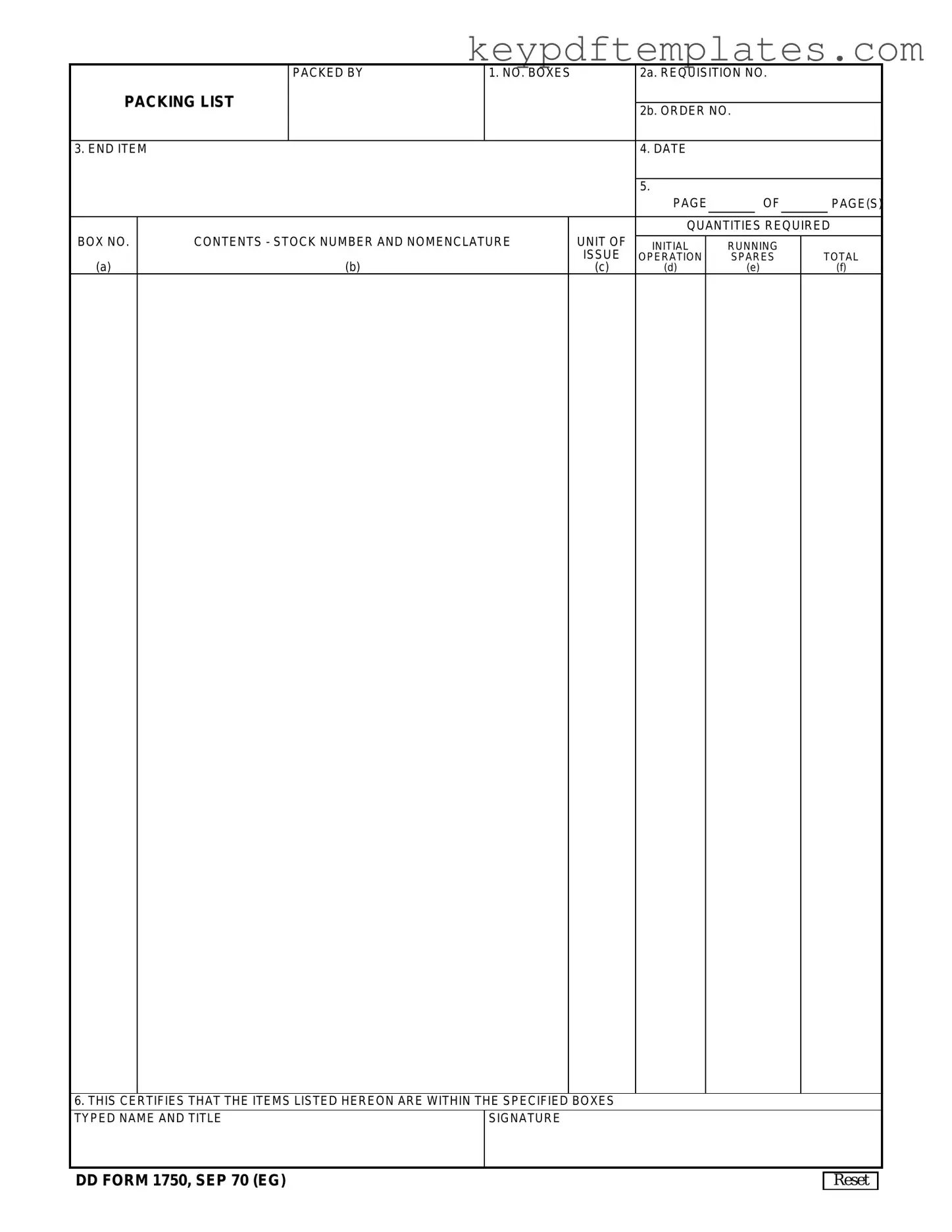Get Dd 1750 Form
The DD Form 1750 is a packing list used by the Department of Defense to document the contents of shipping boxes for military equipment and supplies. This form ensures that all items are accounted for and provides essential information for tracking and inventory purposes. Understanding the details on this form can help streamline the shipping process and improve communication regarding shipments.
Modify Document Online
